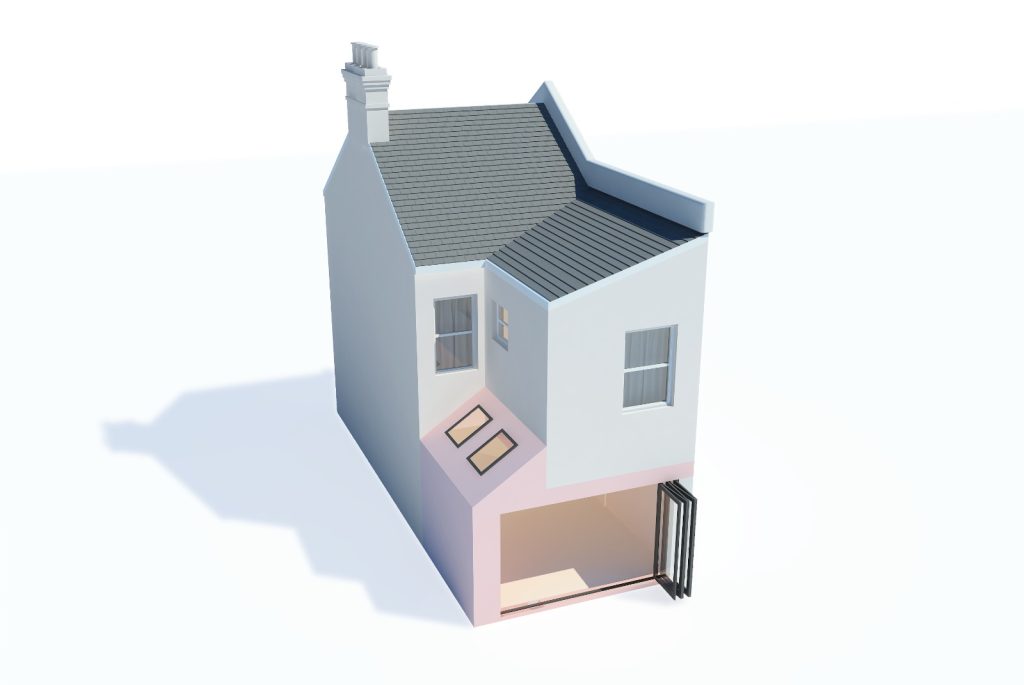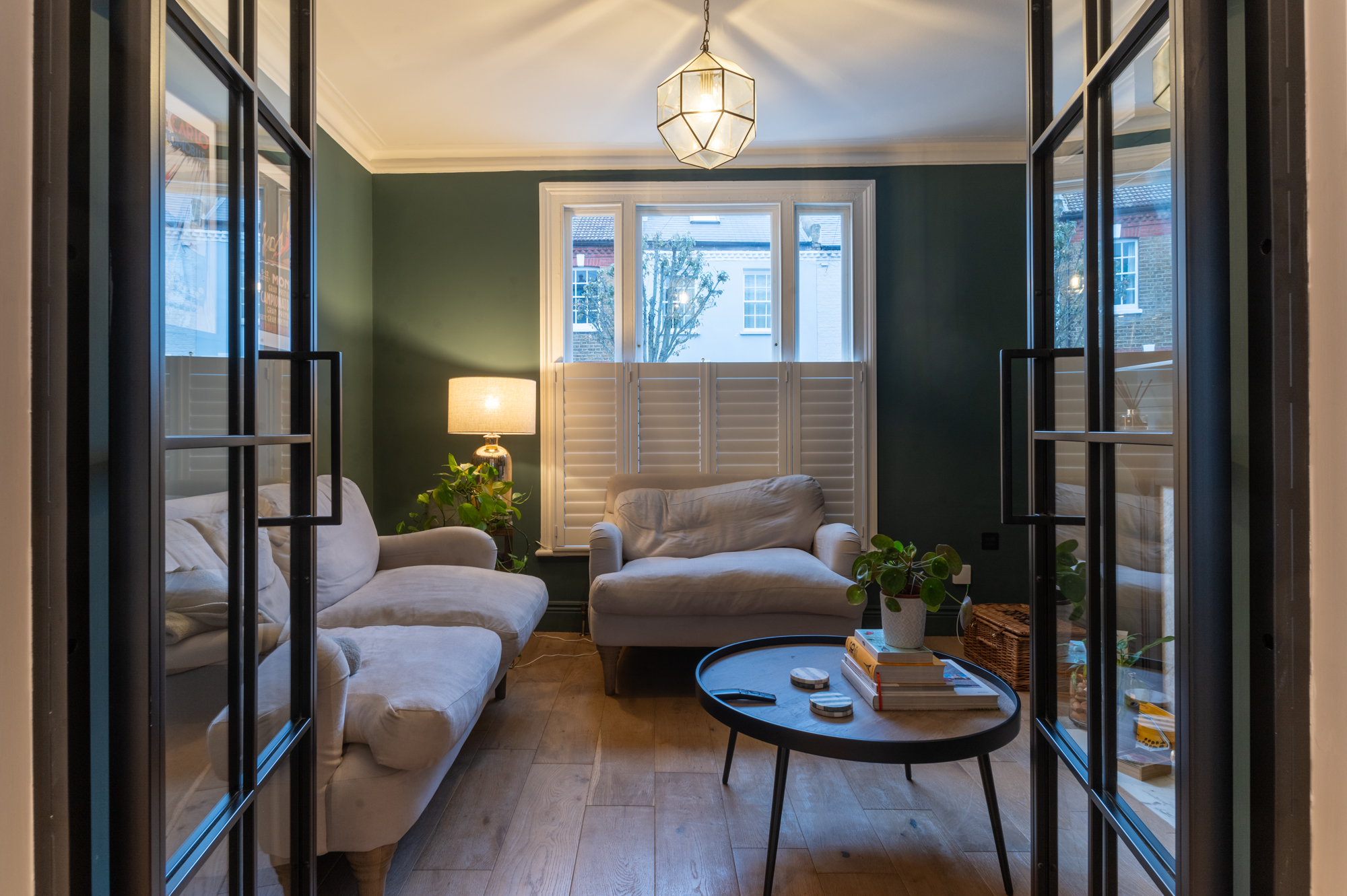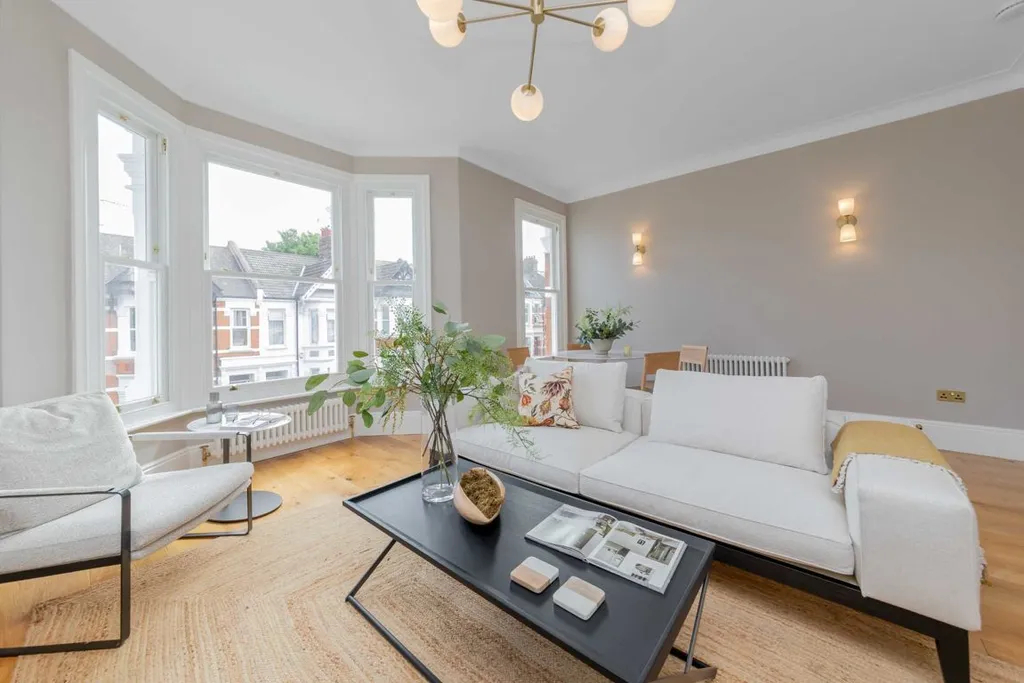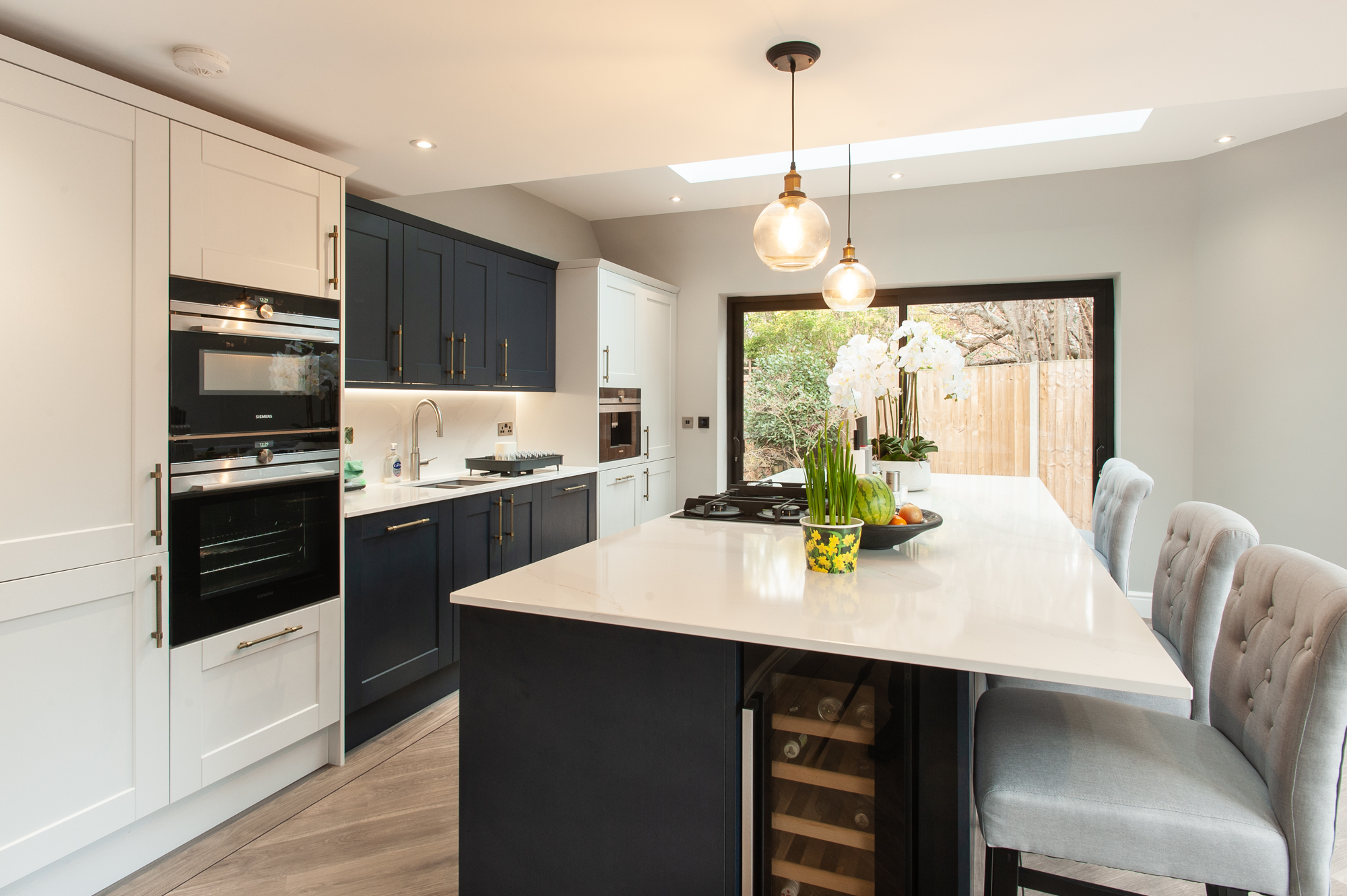Extending the family living space is a priority for most Victorian property owners. A cohesive flow between dining, cooking and living areas is the contemporary formula everyone wants in their period home. While there are several ways to achieve this, the Side Return is the simplest. It is also the most garden-friendly. Let’s show your home some extra love with a Side Return Extension.
What is a Side Return Extension?
Victorian terraced and semi-detached homes feature an ‘outrigger’, also known as a ‘closet wing’ at the rear of the property. It is a projection of the ground floor, half the width of the main house. Originally used as a scullery, it contains the kitchen. The ancillary garden space alongside it is called the Side Return. It was an area used for washing clothes in Victorian times. However, nowadays, it is an underutilised area used for storing obsolete items. An extension built on this space is called a Side Return Extension.

Benefits of Side Return Extensions
- It opens up more liveable space.
- You can extend the kitchen with an open layout, adding dining and lounge space.
- It forges a seamless connection to the outdoors.
- There’s more opportunity to utilise bi-fold doors, oversized windows, glazing and skylights to maximise natural light.
- A Side Return brings cohesion to the Victorian home layout.
- You save back garden space by building on the side.
Types of Side Return Extensions
These can be single-storey or double-storey extensions.
Single Storey Side Returns
These usually contain kitchen extensions with open-plan designs. However, depending on available space and requirements, you can add garden rooms, laundry rooms, utility rooms, bathrooms, entertainment rooms, sitting rooms and art studios.
Double-Storey Side Returns
With two levels, you have more usable space. There’s more versatility to create living spaces. You can add a bedroom, bathroom, playroom, gym, yoga studio, dining room, sitting room or TV room to the upper level. The ground-level space can merge with the kitchen or create other spaces.
Factors to Consider When Planning Your Side Return Extension
Purpose: A vision from the start. Different spaces need different designs. Consider the purpose or the multi-purpose. Usually, the goal is to add value-boosting, functional and aesthetic spaces.
Budget: The paramount determinant of your planned space. It impacts elements like the square footage, roof design and materials used.
Legal Considerations: Adherence to legal requirements. If you live in a conservation area or a listed building, your Permitted Development (PD) Rights are limited. Building beyond the volume of space and design features allowed in PD rights requires planning permission. You will need Party Wall Agreements and Thames Water Build Over Agreements. The structure should be safe and built to current standards and building codes.
Learn more on how to improve ROI on your house extension in London.
Maximising the Impact of Your Side Return Extension
Clever designs, colour schemes, complementing materials and green concepts can enhance your new space. Elevate its stylishness, uniqueness and functionality with these.
Lighting
Once the Side Return is enclosed and merged into the main house, alternate methods for natural illumination become essential. These include extensive glazing, skylights, bi-fold doors, picture windows and glazed roofs.

Colour Schemes
Smaller spaces benefit from a light, neutral colour palette. It creates airiness and spaciousness. Earthy tones like greens bring a more nature-inspired look to garden rooms. You can choose your colour scheme based on the look you want to create – rustic, modern or vintage.

Finishes
Wood, stone, clean lines, shiny tiles, polished metal or overglazed, there are many finishes to choose from. These also include open-brick walls and exposed beam ceilings. It’s important to harmonise these elements to create a unified look.

Outdoor Connectivity
One of the best advantages of a Side Return is the chance to integrate the outdoors with the indoors. Using bi-fold or sliding doors, you can blur the boundaries. Incorporate seating with a modern patio for alfresco dining.

Elevating Aesthetics and Home Value with Extensions by GDB
A Side Return Extension is simple yet effective. It is cohesive, saves valued garden space and opens up more space for stylish living. However, they should also be airy, light-filled spaces. Bespoke designs and sound construction are critical to the success of home extensions.
Good Design & Build specialises in Victorian and 1930s home remodelling in London. We are passionate about design, and every project sees its inception with a bespoke design drawn up by resident architects. Our value-added services include handling planning permission, building control and method statements. Our structural engineers assist with Third Party Wall Agreements and Thames Water Build Over Agreements. What do you have in mind for your house extension? Get a free consultation and no-obligation itemised quote today!




